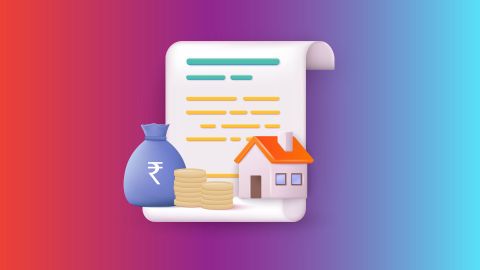If you are buying land or planning property transactions in Karnataka, you have probably heard of RTC. But what does it mean? RTC stands for Record of Rights, Tenancy, and Crops. It is a key document for landowners, buyers, and anyone interested in Karnataka’s land records.
In simple terms, RTC is like a report card for a piece of land. It tells you who owns the land, how it is used, and the crops grown there. The Karnataka government maintains these records digitally to ensure transparency and easy access.
Let’s dive deeper into RTC and why it matters.
Why is RTC important?
RTC plays a major role in property and land-related matters. Here is why:
- Proof of ownership: RTC is the legal proof of who owns a piece of land. If you are buying or selling land, this document is a must.
- Loan applications: RTC is crucial when applying for agricultural loans. Banks use it to check ownership and land usage.
- Preventing disputes: RTC helps settle disputes over land ownership. It clearly shows the rightful owner, avoiding confusion and legal battles.
- Land use details: It gives a snapshot of how the land is being used—whether it is for farming, residential purposes, or something else.
- Crop details: Farmers can use RTC to prove the type of crops they grow. This is useful for government subsidies or insurance claims.
What information does the RTC contain?
An RTC document contains several important details about land. Here is what you will find:
- Owner’s name: The name of the person who legally owns the land.
- Survey number: A unique number assigned to the land for identification.
- Land area: The total size of the land measured in acres or hectares.
- Type of land: Details whether it is agricultural, residential, or commercial land.
- Crops grown: Information on the type of crops cultivated during different seasons.
- Irrigation details: Whether the land is rain-fed or irrigated through canals, borewells, or other methods.
- Encumbrances: Any legal or financial claims on the property, like loans or mortgages.
How to access RTC in Karnataka?
The Karnataka government has made accessing land records simple and digital. Here is how you can get your RTC:
1. Online through Bhoomi portal
- Visit the Bhoomi website.
- Log in using your credentials.
- Enter details like survey number or landowner name.
- Download your RTC copy.
2. At Local Nada Kacheri
- If you prefer offline access, visit the nearest Nada Kacheri (revenue office).
- Provide land details and get your RTC document.
RTC and property buying
If you are planning to buy a property in Karnataka, checking the RTC is essential. This document ensures the land has no disputes, encumbrances, or fraudulent claims. It also confirms the seller is the rightful owner.
When you buy property, especially land, you might need a home loan to finance your purchase. RTC helps lenders verify the land details, making it an important document.
Digital transformation of RTC
In Karnataka, land records like RTC are now digitised under the Bhoomi Project. This project aims to make land records accessible, transparent, and free of errors.
Here is how digitisation benefits landowners and buyers:
- Ease of access: No more long queues at government offices. Get RTC online from anywhere.
- Error-free records: Digitisation reduces manual errors, ensuring accurate details in the RTC.
- Transparency: It eliminates the risk of tampering or fraudulent entries.
- Quick verification: Buyers and lenders can verify land details instantly, speeding up property transactions.
Common terms in RTC you should know
Understanding RTC means getting familiar with a few common terms:
- Khata: It is the account of a property in municipal records.
- Mutation: This process updates land records after property ownership changes.
- Survey number: A unique number that identifies a piece of land.
- Encumbrance Certificate (EC): A certificate showing if the property has any financial or legal liabilities.
RTC vs Khata: Are they the same?
No, RTC and Khata are not the same.
- RTC is a land record showing ownership, crop details, and land use.
- Khata is a municipal record used for paying property taxes.
Both are important, but they serve different purposes.
Challenges in RTC and how to resolve them
Sometimes, landowners face issues with their RTC records. Here is how you can handle common challenges:
- Errors in details: Approach the nearest Revenue Office for corrections. Submit proof of ownership and supporting documents.
- Discrepancy in survey number: Request a survey through government-approved agencies.
- Missing records: Visit Nada Kacheri to retrieve old records or file a request for digitisation.
Why choose Bajaj Housing Finance for your home loan?
When it comes to buying property, especially in Karnataka, navigating land records like RTC is crucial. But just as important is choosing the right financial partner to make your dream a reality. That is where Bajaj Housing Finance Home Loan steps in as the perfect choice.
Here is why Bajaj Housing Finance stands out:
1. High loan amount: Secure funding up to Rs. 15 crore* to turn your dream home into reality.
2. Low interest rates: Enjoy home loan interest rates starting 8.25%* p.a, and EMIs as low as Rs. 741/lakh*.
3. Quick approval: Get approved within 48 Hours* of applying – sometimes even sooner.
4. Flexible repayment tenure: Choose a repayment term of up to 32 years for comfortable EMIs.
5. Simple application: Take advantage of doorstep document collection for a smooth process.
6. Balance transfer facility: Move your existing home loan and get home loan balance transfer with better terms.
Ready to take the next step? Explore Bajaj Housing Finance Home Loan today.
Guides to Check Bhoomi RTC and Land Records
Bhoomi RTC and Land Records |
Description |
Provides information on accessing Karnataka's Bhoomi portal for land records. |
|
Details the process to check mutation status of RTC documents in Karnataka. |
|
Offers guidance on generating mutation status reports via the Bhoomi portal. |
|
Guides users on assessing land valuation using Karnataka's Kaveri online portal. |
|
Provides insights into Maharashtra's Mahabhumi 7/12 land records, which, while specific to Maharashtra, may offer comparative insights. |
|
Offers information on Karnataka's Bhulekh portal for land records. |
|
Guides users on accessing Maharashtra's Mahabhulekh digital portal, which, while not directly related to Karnataka, may provide useful context. |
|
Provides steps to access Bhulekh Khatauni documents online, relevant to various states including Karnataka. |
|
Guides users on downloading Bhunaksha (cadastral maps) online, applicable to multiple states including Karnataka. |




